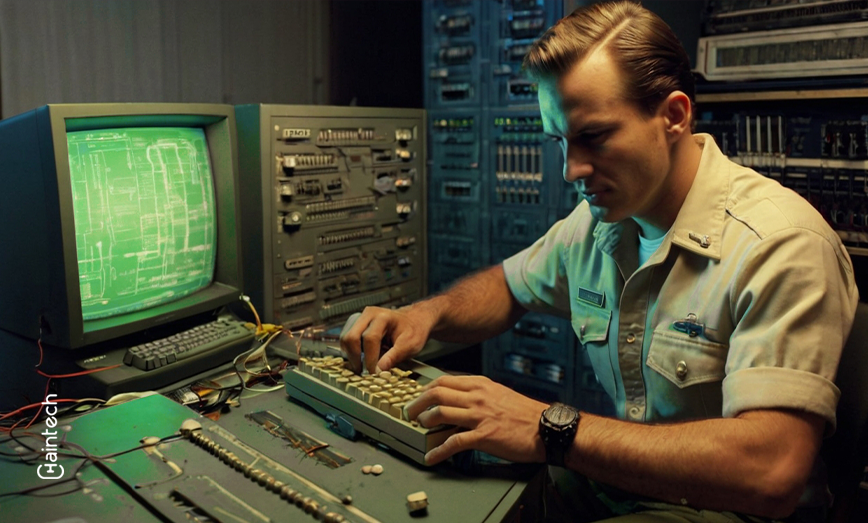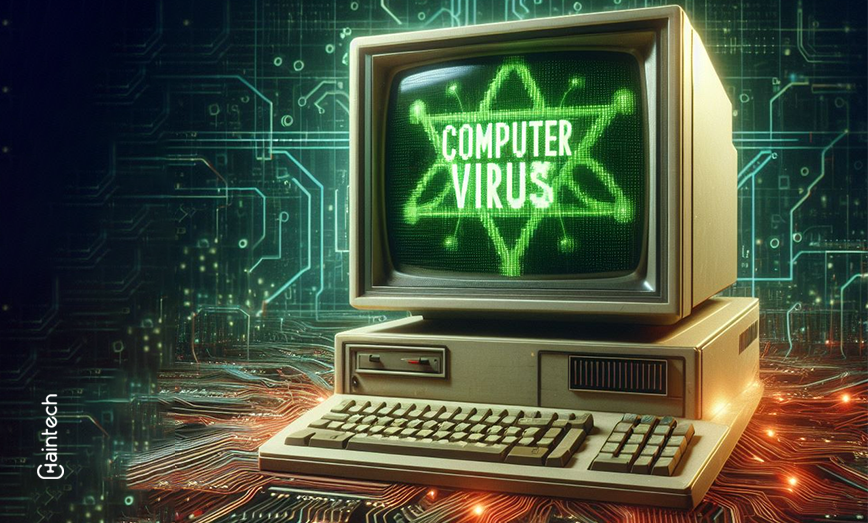USAF Sperry 1160 Compromise: Insights into the 1988 San Antonio

Imagine a small network connecting only a few computers when the Internet was still new. One day, in 1988, that fragile system was hit by something no one saw coming. A worm that is now referred to as the Morris Worm infected and spread to computers all over the world. The USAF Sperry 1160 computer suffered the most drastic consequences in San Antonio. This was a far cry from a nuisance; it demonstrated the extent of the deficiencies in the Air Force’s systems.
This breach rattled the military’s faith in their digital defenses and initiated a transition towards a new form of cybersecurity in the United States Air Force. This incident resulted in the formation of the Air Force Computer Emergency Response Team AMC, a culturally significant achievement towards consolidating national information security.
If you’re curious to know more about how a single cyberattack changed military defense forever, keep reading to learn the whole story.
How the 1988 Attack Unfolded: The Morris Worm Hits Hard
It all began with a graduate student named Robert Morris. Clarifying things, that was not his intent at all. However, his actions resulted in one of the greatest cybersecurity breaches in the history of mankind. In 1988, Morris designed a computer worm that was to be self-replicating and self-propagating. He did not mean to create a problem like that, but he did.
Morris’ worm was the first warhead aimed at the Internet, which swept through cyberspaces, attacking the networks of states and corporations alike. Computers at the USAF Sperry 1160 were some of those that suffered the effects of the virus. During this period, people had grown careless about security due to the fact that it was not as sophisticated as it is currently, and some computers had no passwords or were very weak. This deficiency enabled the worm to hop from one net to the next, doing great bad.
For many reasons, many asked: How could this be possible when it concerns the military computers? The answer is simple: there was no emphasis in 1988 on cybersecurity.
The Attack Vector: How the Morris Worm Took Control
The Morris Worm didn’t use a single method to spread; it had multiple ways of infecting computers. Once inside, it caused havoc, affecting nearly one-third of all computers connected to the Internet.
Here’s a look at how the worm managed to do so much damage:
| Method | What Happened |
| Weak Passwords | The worm guessed weak or nonexistent passwords to gain access. |
| Exploiting Software Bugs | It took advantage of vulnerabilities in operating systems. |
| Replicating Itself | Once in a system, the worm copied itself, spreading further. |
| Overloading Systems | As it spread, it overloaded computers, causing them to crash. |
| Infecting Networks | It moved from one system to another, making it hard to stop. |
This attack showed just how unprepared the world was for cybersecurity threats. The USAF Sperry 1160 wasn’t unique in its vulnerability; most computers of that era were ill-equipped to handle such sophisticated threats. The worm’s ability to spread fast and crash entire networks was a wake-up call for the military and beyond.
What We Learned: Lessons from the 1988 Attack
The 1988 hack taught us many lessons about cybersecurity. Before this incident, most organizations, including the military, didn’t take cyber threats seriously. Security measures were reactive, not proactive.
Here’s what changed after the USAF Sperry 1160 hack:
All external access to those systems was so restricted that people carried out many operations without logging in simply because they only needed a simple password. Organizations began to enforce better password policies with a change over the year following the assault.
Military Response Synchronisation revealed that no one can face the challenge alone, whether a nation or a cybercriminal. Governments, businesses, and expert consultants must merge to tackle such concerns.
Pre-worm era, cybersecurity was based on a reactive strategy. The worm attack established that preemptive approaches are necessary, as they address threats before they emerge.
One remarkable result of the assignment was the organization of the Air Force Computer Emergency Response Team (AFCERT). This team was given the purpose of combating or mitigating the occurrence of such attacks again and making information security the highest priority in the Air Force.
How AFCERT Changed the Game in Cybersecurity
The creation of AFCERT marked a significant shift in how the Air Force approached cybersecurity. Led by experts like Lee Sutterfield and Greg White, AFCERT wasn’t just about fixing the damage done by the Morris Worm—it was about preventing future attacks.
Here’s how AFCERT changed the game:
- Real-Time Monitoring: AFCERT set up systems to monitor military computers in real-time, allowing them to detect threats as they occur.
- Tracking and Pattern Recognition: By studying the patterns of cyberattacks, AFCERT could predict and counter future threats.
- Collaboration with Cybersecurity Experts: AFCERT didn’t work alone. To develop stronger defenses, it collaborated with other agencies and cybersecurity experts.
One of AFCERT’s biggest successes came during the Gulf War when it successfully traced and blocked hackers trying to breach military systems. This real-time monitoring and collaborative effort demonstrated the effectiveness of AFCERT’s proactive approach.
The Broader Impact on National Security
The ominous outbreak of the 1988 Morris worm attack was not only a case of computer crashes; it also impacted the US government’s purse strings and perspective on national security. Mostly because the GAO reported from 100 to 130 million such computers were inhibited from trying to connect to the Internet, whereas those were connected to pivotal government/military operations.
The scale of the attack and the level of penetration it achieved illuminated the danger posed by such systems being left unprotected. It epitomized that strong policies against cybersecurity risks and vulnerabilities are important in the military and all aspects.
Even for the Internet Worm, the effect is not limited or dependent upon the number of compromised hosts; it is more far-reaching and includes sending a powerful message. If a single worm can wobble a good portion of the Internet, imagine what Bergen could tackle with an elaborate plan of attack. This led the government to put some coinage towards cyber crimes, which led to the development and establishment of different units and security policies that we still possess today.
Remediation: How the Air Force Responded
In waking up to such an assault, the Air Force knew it had to move quickly. Establishing AFCERT was not the only measure taken in those early days. Lee Sutterfield and his colleagues undertook several important measures to ensure there were no further attacks:
- Countermeasures: AFCERT has created and implemented countermeasures that prevent attacks.
- Collaboration with Other Cybersecurity Experts: Made bail joint strength easier. Concrete professionals worked with AFCERT specialists to enhance protection and install brakes on the system.
These strategies were not only active once an attack framework was identified. They were structured in such a way that future attacks even before they take off.
During the Gulf War, AFCERT successfully traced hackers and stopped their attempts to breach military systems. This proves that the lessons learned from the Morris Worm had made a difference.
Why the 1988 Incident Still Matters Today
You may be asking: Why should a practice staged as far back as 1988 be of any consequence today? The reason is simple: the Morris worm is a landmark in the evolution of cyber defense. Many vulnerabilities that had been back-lined were brought out into the open, encouraging structures, especially the military, to acknowledge cyber risks.
In the present time, it is the most important aspect of our lives that has not lit up. Gone are the days when the internet was a mere extension; it is now the core of even governmental institutions and even the individual level of communication. The stories from the 1988 USAF Sperry 1160 hack are still relevant because the threats have not gone away; they have only become more complex.
A Defining Moment in Cybersecurity
The 1988 Morris Worm attack against the USAF Sperry 1160 was not just another hacker’s day out. Rather, it was a watershed event in developing the cybersecurity domain. Such an attack demonstrated the serious inadequacies in how the armed forces and other entities handled cyber security.
Revisiting this case, it is obvious that some practices implemented after this incident in 1988 are still practicable in modern times. Active engagement, sensitive issues monitoring, and information sharing to provide security had, and still have, the center stage in the provision of cybersecurity. However, while the methods and handling of situations have changed with time, the basic tenets that emerged from this war are still helping in the war against cybercrime in this case.









